
by Purba | May 26, 2022 | Top fashion news |
The question is “Can Fashion Designers Work From Home?”
Fashion design necessitates a strong sense of imagination and creativity. Designers cannot function properly without the proper working environment. Fashion designer positions necessitate a great deal of collaboration, discussion, and monitoring. Working in a group is required for everything from fabric selection to pattern design. But still there are a few works which can be done from home with ease eg. Flat sketches, CAD designs, making tech packs, etc. Many have earned a lot by working from home, freelancing, supporting the brands in these segments.
Fashion designers have to participate in meetings. Online meeting can help in working from home. Courtesy: Pexels.
As a result, working from home is tough for them. They must advertise or offer the product to the client once it has been completed. The Covid 19 pandemic, on the other hand, forced everyone to work from home. With such challenges, fashion designers were forced to adopt a “work from home” strategy.
Reasons For Which Work From Home Approach Is Difficult For A Fashion Designer
But it’s not impossible!
A fashion designer cannot work from home for a variety of reasons. They must meet with the customer, plan fashion shows, present products to clients, advertise them, and choose the fabric for the task.
All of this is impossible to do from home. You may be required to travel to a specific location for meetings. You may also be required to conduct tours as the firm requires.
As a freelancer, you must also exhibit and sell your products to clients, which is impossible to do with technology. Over a video conference, you can’t show your client the fabric you used.
There are plenty other factors to add to the list. The following are some of the most important reasons:
Location
Fashion designer jobs in India and overseas require a suitable working environment because:
Ample room is required: Drawing patterns, cutting fabric, sewing, and monitoring the job all require a lot of space. As a result, in order to do business, fashion design firms require large mansions.
A separate lighting setup is required: These homes also require a lot of lighting and cloth racks for product storage. Such arrangements are not available when working from home.
Even as a freelancer, you’ll need a workspace or a workshop. That can’t possibly be your residence. You can get a low-cost location, but you’ll have to move your firm to another location to grow. All of this is impossible to achieve at home.

Fashion designers have to participate in meetings. Online meeting can help in working from home. Courtesy: Pexels.
Team
As an independent designer, you can create patterns on your own time. Big enterprises and personal brands, on the other hand, employ a larger number of people. The teams’ tasks include:
By getting together, these teams lead the work of the companies.

Fashion designers have to participate in meetings. Online meeting can help in working from home. Courtesy: Pexels.
They advise each other on patterns, materials, and a variety of other tasks. Fashion design is entirely dependent on teamwork.
Sewing experts, designers, pattern creators, and marketers make up the team.
Every project has a manager who oversees and monitors the entire process. They also look to see if the designs and patterns are current.
These are not exercises that can be done at home.
Time
Fashion designers have very little free time. They must make numerous sacrifices.
They may have to work longer hours.
Depending on the work pressure, they may need to forgo proper lunch, sleep, and a variety of other activities.
Working from home may make it easier to return to work because they are not required to be in the office. However, it will slow down work because:
You have a work environment in the office, yet you may become sedentary at home.
If you want to be a fashion designer, you’ll need to schedule meetings and stick to deadlines.
Video conferencing meetings are not always possible.
You may need to choose models for fashion shows on occasion, but this is tough to do from home. You want to find out what suits the model as styling the model is a fundamental piece of these shows.
You likewise need to check and reverify that norm of creation doesn’t fall. Observing over everything is unimaginable from home. At home, you will confront a lot more interruptions, which will dial back your work speed.
Travelling places
A style fashioner is constantly expected to be adaptable in movement. It is so on the grounds that:
They need to go frequently to meet many individuals and clients.
They additionally need to venture out to go to fashion shows.
Buying textures and different supplies likewise should be finished by them for which they need to travel.
These works are unrealistic in the event that you telecommute. As a style fashioner, your occupation isn’t just to plan. You additionally need to do a lot of hands on work for the brand you are working for.
Keeping An Eye Over The Trends
Being stylish is a fundamental piece of a design planner. Style originator opportunities generally look for an up-and-comer who knows about the latest thing. This assists the organization with developing quicker, remembering the market requests. To pursue up with the ongoing direction, you really want to:
Peruse different design magazines.
You should likewise visited different design shows to see what’s happening.
However you can follow up a magazine or peruse the web from home, you can’t visit a design show by sitting at home.
Other than that, you really want to configuration, remembering the patterns. You need to examine it with your group, show them how another plan works, and considerably more. Every one of these isn’t possible accurately from your home.
Did the “Work from Home” Policy Work in Lockdown?
Because of the pandemic, telecommute turned into something vital. However remote working had been a piece of corporate life for quite a while, the design business couldn’t embrace it completely.
Perhaps a little while could be telecommute, however hands on work is fundamental in this industry. Simultaneously, a few utilized their past collapsing tables to deal with some favored floor.
It was rushed to Select a texture. Over video calls, you can’t do those works. This demonstrated again that work from home is challenging for the style world.
But still fashion designers nailed in the CAD designs made from their homes
Though it is quite difficult for designers to work from home, many freelance designers nailed in the CAD designing sectors. They work from home and offer assistance in print repeat designs, flat sketching, pattern designs, Marvelous design, etc.
End Notes
The job of a fashion designer involves a lot of face to face communication. Working from home hinders this aspect. But still fashion designers have found their ways of working from home and advanced the fashion movement.
To know the biggest fashion trends of 21st century, you can visit here! Moreover, if you want to know the future of fashion industry after Covid-19, you can click here!
And if you want to read one of our premium case studies on Fast Fashion Vs Slow Fashion, you can go here!
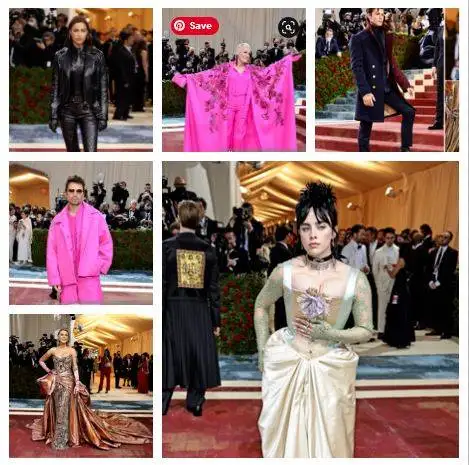
by Purba | May 16, 2022 | Academic |
What is the Met Gala?
The Met Gala (or Met Ball), formally known as the Costume Institution Gala or the Costume Institute Benefit, is an annual fundraising gala held for the benefit of the Metropolitan Museum of Art’s Costume Institution in New York City. It’s the biggest fundraising night in New York City, where designers, models, musicians and Hollywood actors all come on the red carpet to show off their costumes in aid of raising money for the event. Celebrities from various professional spheres, such as fashion, film, television, theatre, music, business, sports, social media and politics are invited to the Met Gala, organized by American fashion magazine “Vogue.
When the Met Gala is held?
The gala (gala means fest) is held annually on the first Monday of May. It marks opening of the Costume Institute’s annual fashion exhibit on the Upper East Side of Manhattan. Several of the attendees are depicted on the covers and pages of Vogue. Every year’s event celebrates the specific theme of that year’s Costume Institute exhibition that sets the tone for the formal attire of the night. Guests who were invited are expected to curate their fashion to match the theme of the exhibit, which is generally haute couture. American journalist Anna Wintour, the editor in chief of Vogue, has chaired or co-chaired the Met Gala since 1995.
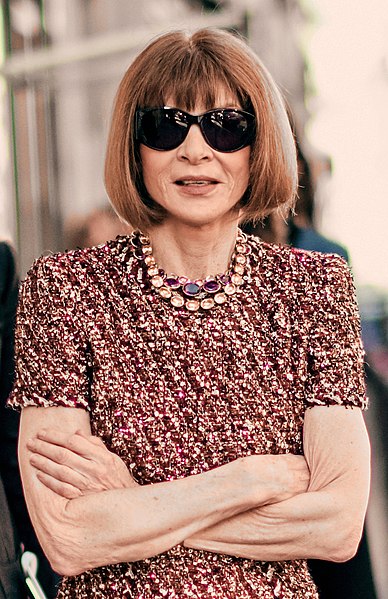
American journalist Anna Wintour, the editor in chief of Vogue, has chaired or co-chaired the Met Gala since 1995. Photo courtesy: Wikimedia Commons
.
The history of Met Gala
The Met Gala was established in 1948 by fashion Communicator Eleanor Lambert as a fundraiser for the newly supported Costume Institute to mark the opening of its annual exhibit.

Eleanor Lambert Berkson (Birth: August 10, 1903, Death: October 7, 2003) was an American fashion publicist who was instrumental in the emergence of New York City as a major fashion capital. Photo courtesy: Time Magazine
The first gala was a dinner and tickets were just $50 each. Over the first few decades of its existence, the gala was merely one of many annual benefits held for New York charitable institutions.
Similarly, the attendees of the early gala were almost entirely member of New York high class member of the city’s fashion industry. From 1948 to 1971, the event was held at venues such as the Waldorf Astoria, Central Park and the Rainbow Room.
From 1948, the Met Gala was occurred consecutively each year, except the year 2000 and 2002.
Met Gala ticket price
Actually Met Gala is the social event of the year and the fashion world version of the Oscars.
If you want to get yourself there, it will cost over $30,000 for an individual ticket. In 1995, the tickets were just $1,000. For going free you have to be chosen by a designer who has a table and whose work will be featured at the event. If you are selected, you will be dressed by that designer, which they feel matches the theme, wearing their design, your ticket in.
What is the price of a table in Met Gala?
Let’s move on from individual tickets, there is the option of purchasing a table, which costs approximately $275,000 to $300,000.
However, many celebrities who attend this event don’t actually end up paying for their tickets and costumes for the Met Gala. Each celebrities outfit is usually bankrolled by major fashion houses, in exchange for exposure and the goodwill of attending a charitable event.
How to get invited in Met Gala?
1) Donate a huge amount of money
2) Be a celebrity
3) Work at Vogue
4) Perform at the Gala
5) Sponsor the Gala
2021 Met Gala:
Typically the gala is held annually on the first Monday in May, but due to COVID-19 pandemic, the soirée was cancelled last year, and postponed to the September, 2021, and the gala was held on 13th September, 2021, with live red carpet coverage starting at 5:30 p.m. EST, at the Metropolitan Museum of Art in New York.
In 2021, the gala actually presented a two part exhibit, the part one was: “A Lexicon of Fashion,” was held on September 18, 2021 and the part two was: “An Anthology of Fashion,” was held in 5th May, 2022 (actually held in 2nd May), and we called it 2022 Met Gala.
The event on 13th September was hosted by co-chairs Timothée Chalamet, Billie Eilish, Amanda Gorman, and Naomi Osaka, and honorary chairs Tom Ford, Adam Mosseri, and Anna Wintour. Due to COVID-19 pandemic guidelines, the celebrity-studded red carpet was a smaller affair than usual, with invites stipulating a dress code inspired by American Independence.
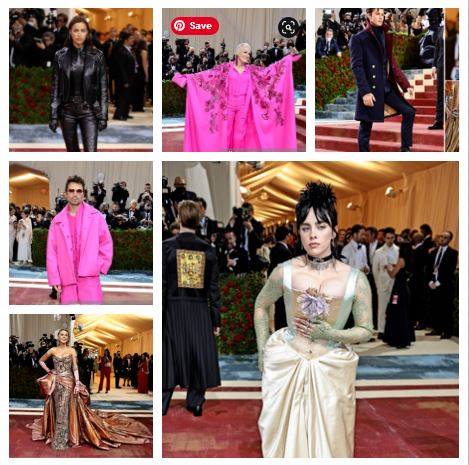
In Met Gala 2022, “Blake Lively, Billie Eilish, Sebastian Stan, Stormzy, Frederick Robertsson, Megan Thee Stallion, Glenn Close, Gigi Hadid, Irina Shayk, Olivia Rodrigo, Jordon Roth, Shawn Mendes, Evan Mock” were present. Image Source: https://tenpiecesofeight.com/
2022 Met Gala:
The 2020 Met gala was off because of the COVID-19 pandemic. The Gala resumed in 2021, however was held in September rather than in May that year. In 2022, the Met Gala returned to holding its traditional May ceremony, and it was held in 2nd May, 2022.
In 2022 Met Gala “Blake Lively, Billie Eilish, Sebastian Stan, Stormzy, Frederick Robertsson, Megan Thee Stallion, Glenn Close, Gigi Hadid, Irina Shayk, Olivia Rodrigo, Jordon Roth, Shawn Mendes, Evan Mock” were the winners.
2022 Met Gala guest list:
- Blake Lively,
- Billie Eilish,
- Sebastian Stan,
- Stormzy,
- Frederick Robertsson,
- Megan Thee Stallion,
- Glenn Close,
- Gigi Hadid,
- Irina Shayk,
- Olivia Rodrigo,
- Jordon Roth,
- Shawn Mendes,
- Evan Mock
╚► *a) Vogue is a famous fashion magazine
(Link: https://www.vogue.co.uk/?international )
╚► Sources: https://www.nytimes.com/
https://www.instyle.com/
https://www.vogue.co.uk/?international
https://www.elle.com/
https://en.wikipedia.org/wiki/Main_Page
https://www.yahoo.com/lifestyle/
https://www.eonline.com/
https://www.usmagazine.com/
https://sourcingjournal.com/
https://www.whowhatwear.com/
Image Source: https://tenpiecesofeight.com/
Yaishik Dutta
BUTEX-47
TFD
To know the biggest fashion trends of 21st century, you can visit here! Moreover, if you want to know the future of fashion industry after Covid-19, you can click here!
You can check our Free and Paid Fashion Illustration Courses!
To know the link between Chemistry and Fashion, you go go here!
And if you want to read one of our premium case studies on Fast Fashion Vs Slow Fashion, you can go here!
Fast Fashion Vs Slow Fashion: A Case Study

by Purba | May 13, 2022 | Academic |
A polo shirt is a very common attire that we see in our day to day life. But how many of us know the history of Polo shirt, the timeless iconic apparel? Well, Polo shirt’s history is rich and interesting, a must know for all the fashionistas for sure. So, let’s dive into this iconic shirt’s history and try to answer what is a polo shirt, why it is so called, who invented it, how it came to its present form and all the questions that are lurking in your inquisitive brain!
What is a Polo shirt?

The original button-down Polo Shirt of 1896. Brooks’ introduction of the button-down polo shirt making the first entry in the history of Polo Shirt. Picture from colparr.com
Polo shirt is a perfect combination between casual and formal. It is more formal than a t-shirt and casual than a shirt. Polo shirt has an even hem and can be worn untucked but for a dressier look, it can be tucked and worn with a belt. Polo shirt is slightly different from t-shirt and shirt. It has a standup collar with a button placket like a shirt. It is made by cotton like a t-shirt but its made only by knitted cotton.
Why is it called a Polo shirt?
There is always a question, why is it called polo shirt? Well, it is a fascinating story. In the late 19th century, polo was a famous game and players wore long sleeved shirt which caused them discomfort so they decided to make something which can help preventing their collar flip in wind during game and make them comfortable. In these persuit, British polo player made button-down collar shirt. at the end of 19th century Jhon E Brooks of US clothing company Brooks Brothers came to England on a European buying trip. After watching a game of polo he took a liking to the unbutton down collar of polo player shirt. Keeping the idea in his mind after going home, in 1896 the Brooks Brothers lunched their button-down dress shirt said to be most limited item in fashion history which is now known as polo shirt. It was said that polo shirt first invented in India then it gained worldwide momentum and cult status decades later in France through tennis.
Let’s take a look at the journey and history of Polo Shirt
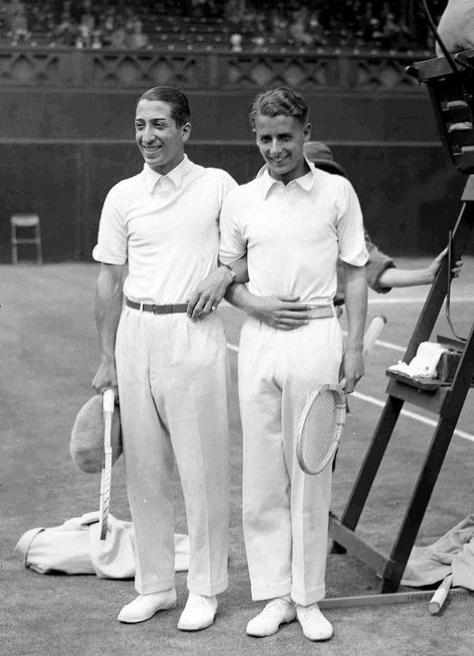
Polo shirt in 1920 making the history of Polo Shirt.
In the 1920s, Lewis Lacey, a Canadian-born British polo player furthered the reach of the emerging ‘polo shirt’.
Read our another premium and trending article on Fashion in the 21st Century
Lacoste Polo shirt history
Jean Rene Lacoste, a French sportsman is known as a legend in tennis, he did a lot for the advanced development of the polo shirt. He improved his tennis attire in a similar manner in which the polo shirt had been enhanced, he developed a new-style shirt with short sleeves, an unstarched collar, a longer back and using pique cotton technology. For advertising and making people all over the world aware about the existence of polo shirt, he went on to wear this shirt in his winning 1926 US Open Championships, attracting many eyeballs. In the early 1930s, he started La Chemise Lacoste, a clothing brand with which he began to sell the famous crocodile logo-emblazoned shirts.
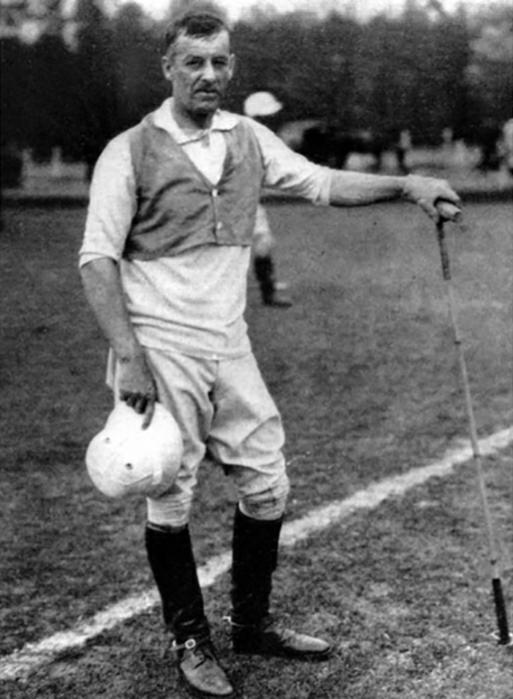
The polo shirt from Jean Rene Lacoste.
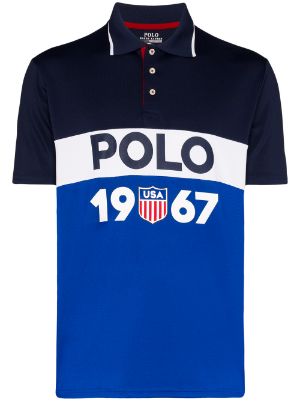
Ralph Lauren lunched polo shirt.
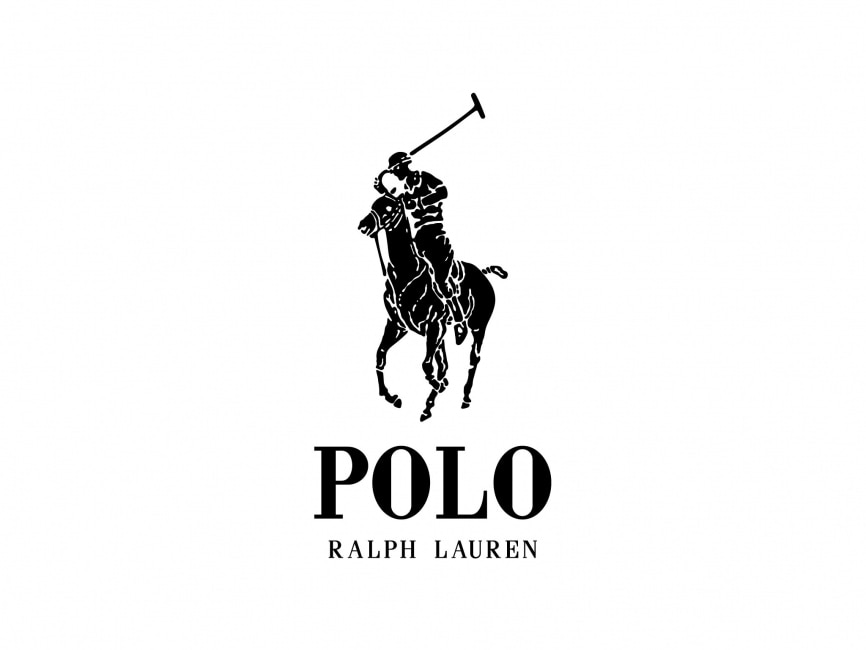
The Polo player logo of Ralph Lauren’s Polo.
Over forty years after Lacoste modelled his new-look shirt, in late 1960s Ralph Lauren launched a menswear line ‘Polo’, a name chosen to portray sophistication and timelessness. In the early 1970s, his signature ‘Polo Shirt’ became a prominent and conspicuous piece of the line, with the iconic, all time favourite polo player logo on the chest.
It was not designed specifically for polo players but was very similar to polo attire of the time and it assisted hugely to boost its popularity.
Ralph Lauren, the legendary American fashion designer, made a great contribution in the growth stage of polo shirt. He invented a new style of polo shirt which is known as the iconic style. It was called iconic because of its rib collar, three-button placket and moisture-wicking lisle fabric. When he was 28 years-old, he persuaded the Beau Brummell company’s president to let him start his own line. Because of his interests in sports, Lauren named his first full line of menswear “Polo” in 1968.
Now polo shirt is made according to the wish of the designer. Only the basic structure remains intact.
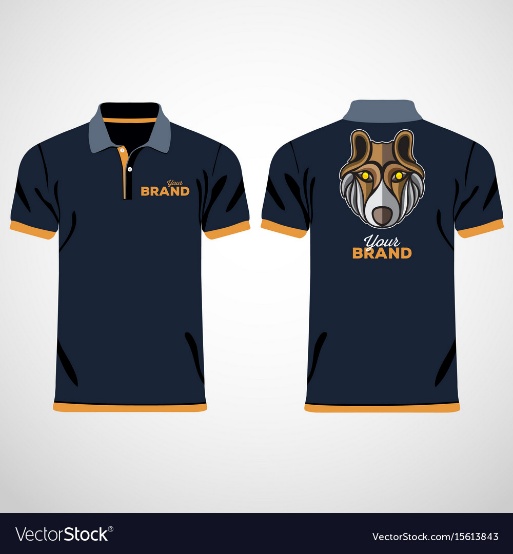
Modern polo shirt adding layers to the history of Polo Shirt. Courtesy: victorstoke.com
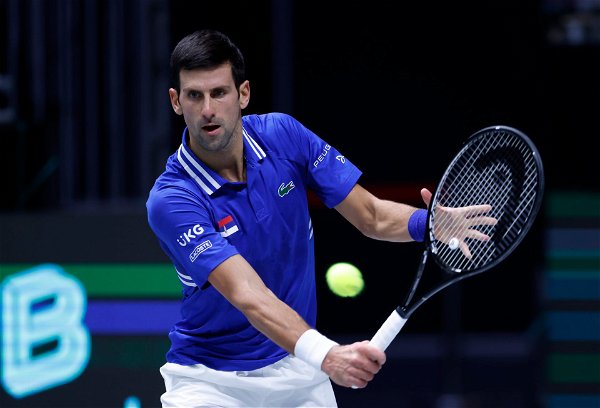
Novak Djokovic playing tennis wearing a polo shirt. Courtesy: eurosports.com
There is hardly found any apparel more classic, comfortable, and casual than a Polo shirt. Since they’re slightly more professional and modest-looking than a traditional T-shirt, Polo shirt is a popular choice for offices in warm climates where employees need to stay warm and look their best simultaneously. It is also very popular for sports. Tennis shirt, cricket jersey, golf shirt and many others. This timeless garment gives us a stylish look of a shirt as well as the comfort of a t-shirt.

Bangladesh National Cricket team wearing polo shirts. Courtesy: news.adpolve.com
Read our another premium and trending article on Fast Fashion vs Slow Fashion: A Case Study
Reference:
https://db poloclub.com
https://Sanvet.com<journal>
https://www.artofmanlinss.com
https://lifestylebyps.com<blogs>
https://www.landsend.com<article>
https://www.thetrendspotter.net
Home Classic
Author: Umme Huny Anamika
Department of Textile Fashion and Design,
Bangladesh University of Textiles (BUTEX).
As you read about The history of Polo shirt, you might be interested to read about Ralph Laruen’s Polo shirt- a definitive guide to the Polo shirt’s impact launched by Ralph Lauren-the brand itself!
Ralph Lauren Publishes ‘Ralph Lauren’s Polo Shirt’-a Definitive Guide to the Polo Shirt’s Impact
You can also read our another article written on the history of pattern and motif!
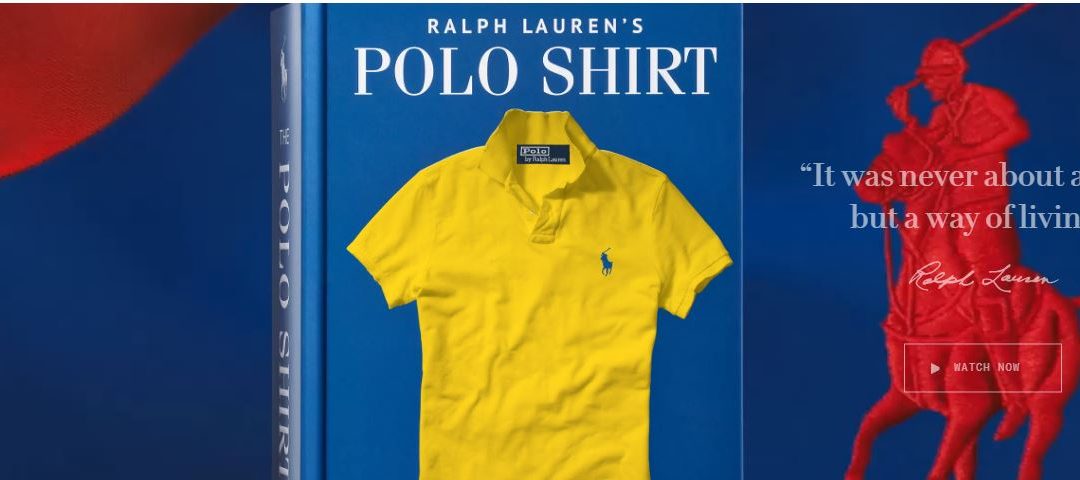
by Purba | Apr 27, 2022 | Top fashion news |
Ralph Lauren, the legendary US company, published a book called ‘Ralph Lauren’s Polo Shirt’ a colorful book containing the history, origins, and influence of one of fashion’s most iconic fashion items. Published in partnership with Rizzoli Books, the new book celebrates #ThePoloShirt’s timeless style.
Ralph Lauren, the founder of the brand says, “It was never about a shirt, but a way of living.”
‘Ralph Lauren’s Polo Shirt’ book covers the journey, revolutionary impact on different cultures and style for more than half a century.
To know more visit: https://www.ralphlauren.com/polo-shirt
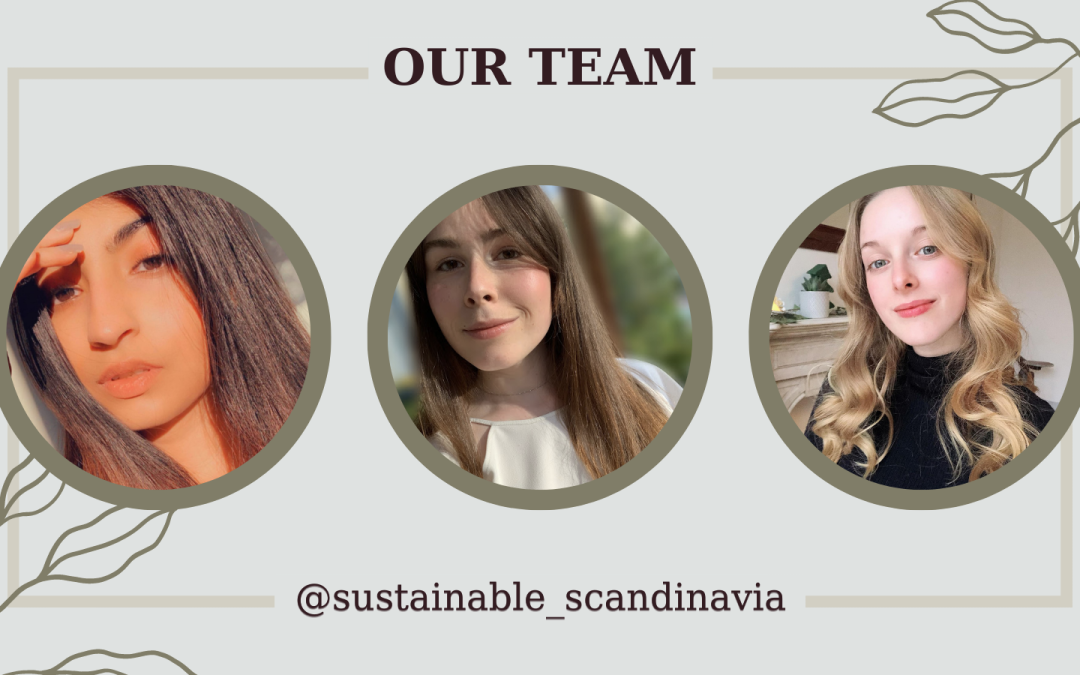
by Purba | Mar 19, 2022 | Shout out |
Sustainable Scandinavia was created to bring awareness to the issues of the fashion industry but also to the solutions that already exist. And because the founders live in Denmark, they wanted to shine a light on the initiatives that exist there first. Hence, the name “Sustainable Scandinavia”.
Kazi Purba, the Founder and President of Fashionnovation contacted with Yulia Motrenko, a former cell biologist and a part of a research group at Harvard Medical School, who is currently following her passion for fashion through ‘Sustainable Scandinavia’. Kazi Purba tried to delve into the activities of this beautiful initiative of Yulia Motrenko and her team by asking the following questions.
Tell us something about you and your blog. Why is it called Sustainable Scandinavia?
Sustainable Scandinavia is not just a regular Instagram blog with beautiful pictures of stylish women and fancy clothes. Our goal is not to persuade you to buy more – it is the opposite. We want you to buy less, and thoughtfully choose every piece with the same care you would use to choose a company to invest in.
Sustainable Scandinavia was created to bring awareness to the issues of the fashion industry but also to the solutions that already exist. We believe that if people have the right information, they can make the right decisions – whether that is in producing or buying clothes. We want to share what we learn every day and give our followers well-researched but digestible information on different sustainability topics in fashion to inspire them to reconsider their habits in regard to fashion.
Then, we want to fight the idea that sustainable fashion is just “baggy cotton clothes of earthy colours”. We are convinced it is possible to be stylish, love fashion, and protect the planet. It is a whole beautiful world we want to explore together.
And because we live here in Denmark, we wanted to shine a light on the initiatives that exist here first. Hence, the name “Sustainable Scandinavia”.
So, if you’re interested in discovering new young and established brands and learning more about their unique stories and visions, come join us!
What’s the story behind your initiative? What motivated you to establish that?
I started my career as a cell biologist and for a long time, I was planning to work as a researcher in a scientific laboratory. When I finally achieved my goal and became a part of a research group at Harvard Medical School, I realised I did not enjoy it. I moved to Copenhagen and decided to follow my passion for fashion.

Team Sustainable Scandinavia. Photo courtesy: Yulia Motrenko.
Fashion was always a big part of my life but I was always too scared to pursue it as a career. But here in Copenhagen, I made two friends who share my passion for style and fashion. However, this is not the only thing that binds us – we share a hope for a better future for the fashion industry. And after spending a lot of time reading, talking and learning about sustainability in fashion, we just could not keep silent anymore. So we started Sustainable Scandinavia.
Greta Thunberg warned us – our home is on fire.
And while some people think that this is about protecting nature or preserving biodiversity for the sake of the planet – it is not. It is for the sake of our own future, the future of humanity on Earth. And if we want our nature to stay as diverse, beautiful, and good to us in a decade from now, we have to take action today.
Most people don’t think about the fact that just by excessively buying new clothes we are contributing to the world-scale disaster. And in order to realise why it happens like this, we need to think about fashion production and consumption. Think about everything – the process of growing crops, weaving yarns and fabrics, dyeing them, sewing clothes, packing them into tons of plastic, and transporting them using planes and trucks. There are so many elements in the fashion supply chain, so many processes lying behind every T-shirt and every pair of jeans we wear. And each of them leaves a footprint on the environment.
What is sustainability according to your viewpoint? Can we really assure a sustainable future of fashion?
Sustainability has become a big buzzword these days. And of course, there is no such thing as “100% sustainable”, production and consumption always have an impact on the earth, our society, and ourselves. But we can decide whether our impact should be positive or negative.
So for us, Sustainability in fashion is about making the decisions that have a positive impact and help redistribute value – giving back to the people that make the clothes we love and wear every day, and the planet that gives us the resources to make them. Because if we don’t, soon enough the earth and people will have nothing more to share.
In the end, the current fashion system leaves all of us feeling anxious, sad and powerless. The clothes we buy don’t look appealing and come out of a trend just after one season, reminding us that we’ve spent money for a very low value. It’s time to change that.
We need to understand that sustainability is not an option, it is the only way forward.
4. Do you have any plan to launch any sustainable product?
We are working hard now on releasing a multi-brand platform for Scandinavian sustainable fashion brands. It is our dream to gather small-scale brands that approach their production consciously and with care for the environment, and help them reach the right audience and grow.
At the same time, we want to take responsibility for educating people on matters of ethical fashion and convince them to choose local artisans and businesses over mass market stores.
The platform will allow guests to find brands according to their interest in sustainability and be sure that they are thoroughly examined by our team. Brands will be checked for ethical work conditions for their employees/in their supply chains, source of materials they use, logistics and biodegradability of final products.
And, as we believe that sustainable fashion is not only about unisex clothes in organic cotton (there are plenty of other fabrics!), we will ensure that customers have access to different styles and models. Apart from clothes, customers will also find accessories, bags, shoes and jewellery – all ethically made and with minimal harm to the planet.
We want it to become a perfect place for the sustainable fashionista to shop and we are putting a maximum of effort into making it real.
What are your future plans with your platform?
In the future, we plan to scale up and expand to other social media platforms – Tiktok, Facebook, Youtube. We want to promote sustainable fashion in many different ways and visual storytelling has a big place in our mission.
We are going to create even more exciting content, including interviews with CEOs of brands, educational materials on certificates and fabrics, fresh news on the sustainable side of fashion and much more.
Our aim is to create a community of like-minded people who can change the future of the fashion industry together. And we are calling you to become a member of this community right now ❤️
Our social media
Instagram: www.instagram.com/sustainable_scandinavia
Tiktok: www.tiktok.com/@neeti_sustainable
______________
You can also read: https://www.fashionnovation.com/lili-a-sustainable-brand-for-upcycled-jewelry/
As you’re interested in sustainable fashion, you might be interested to read another of our premium and trending article on Fast fashion vs slow fashion: A case study. You will get a lot of valuable perspective here: https://www.fashionnovation.com/a-case-study-on-fast-fashion-vs-slow-fashion/
If you want to know about M&L Creative, the Number One Choice for Sustainable Brands, you can read it here!


















